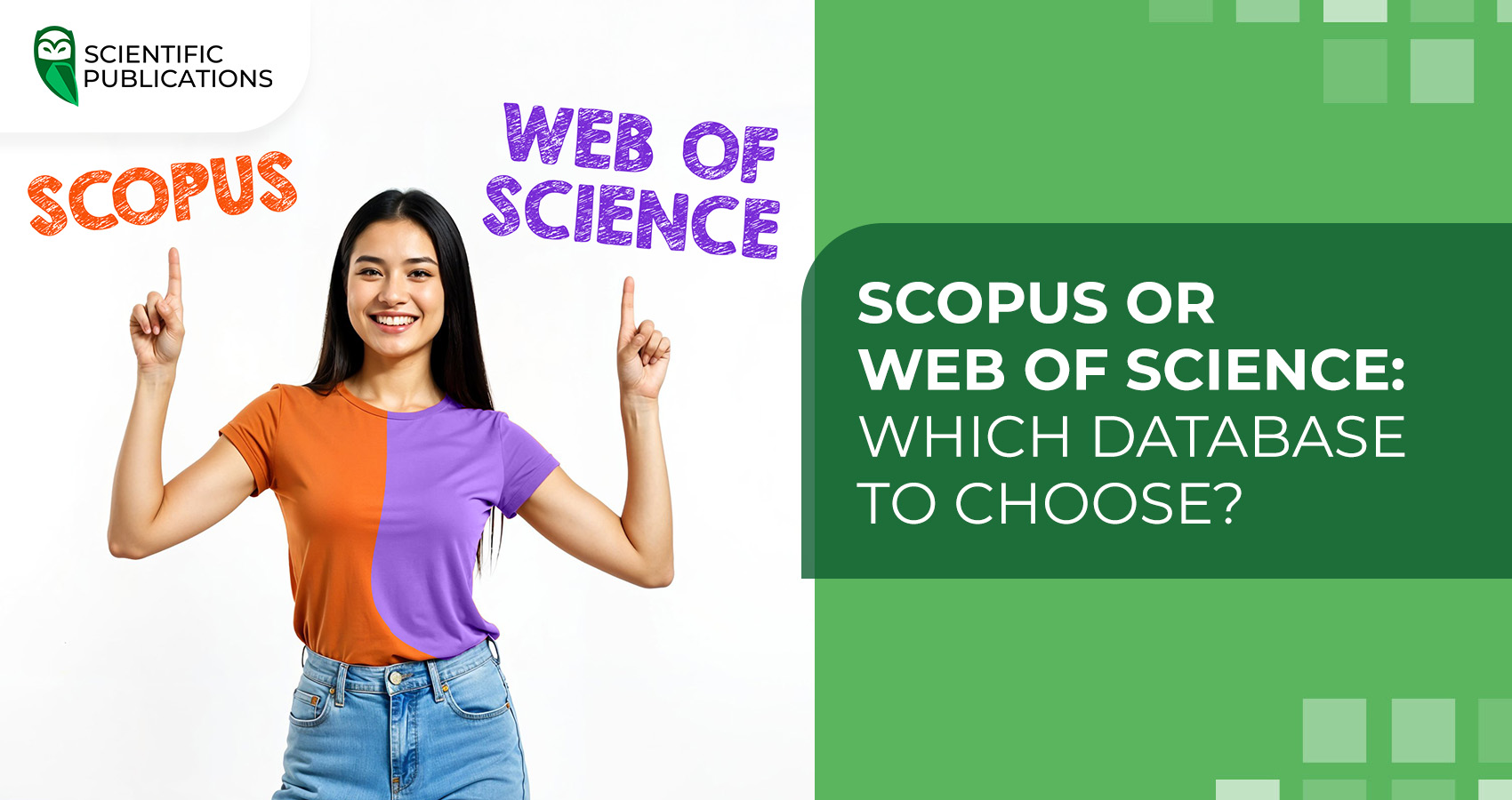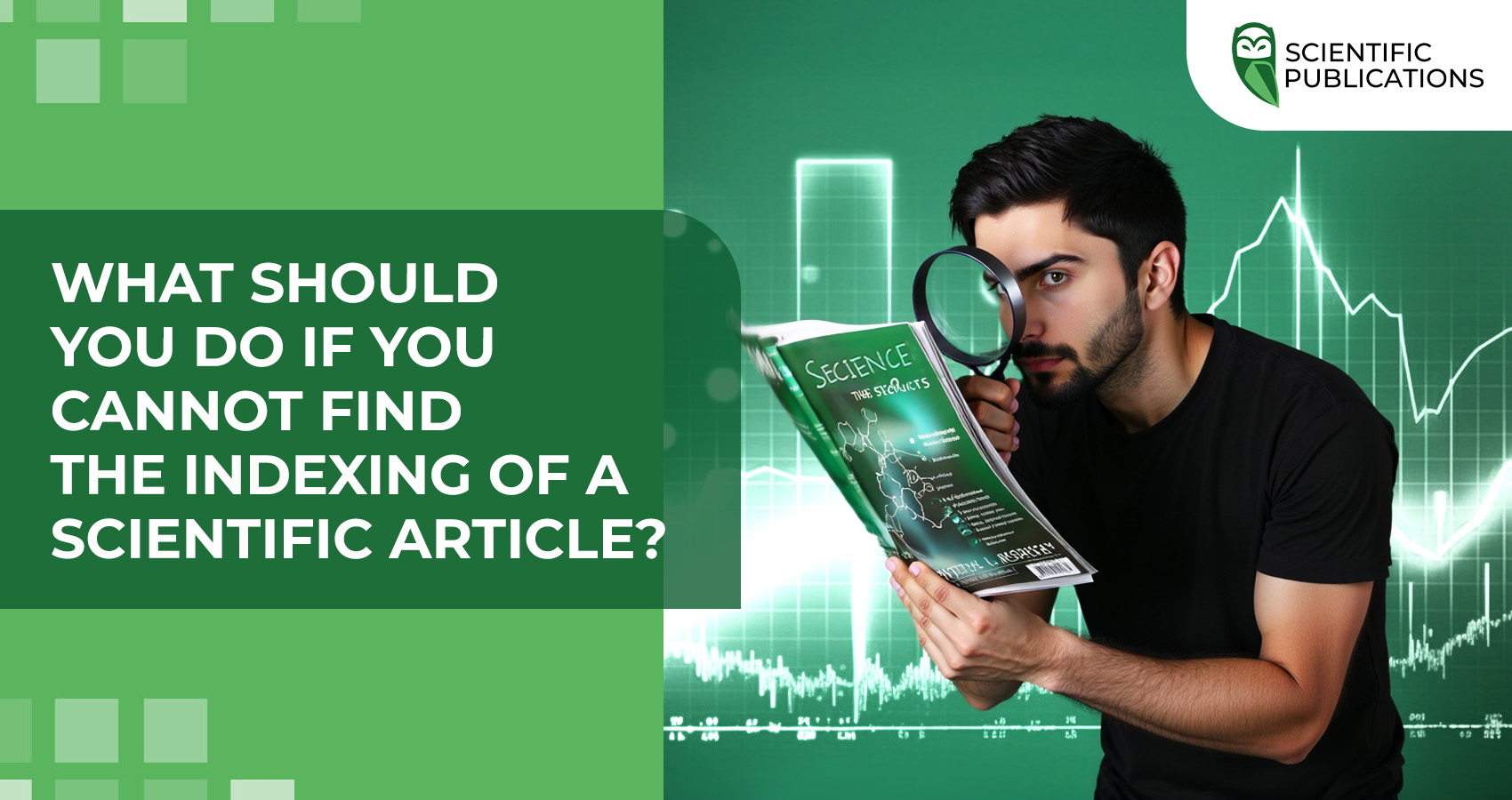Today, there are many scientometric databases: some of them are prestigious and reputable, while others should be avoided. Scopus and Web of Science are undoubtedly the most popular databases. Having publications in journals indexed by these databases is an important prerequisite for obtaining academic degrees and titles, increases the chances of receiving grants, funding, career advancement, and is also necessary for reporting, etc. At the same time, many scientists face a dilemma: which database to choose to publish an article? In this article we will analyse the content of both bases, provide a characterisation of them and look at their key differences to help you choose the base that best suits your needs.

Scopus
Scopus is one of the largest scientometric databases in the world. Publishing scientific articles in this platform is important for scientists for various reasons, including obtaining academic degrees and titles, participating in grants, submitting reports, career development, obtaining visas and funding, including awards, scholarships, etc.
Scopus content
- over 2.4 billion citations
- over 100 million records
- over 2.6 million preprints
- over 28.9 thousand active journals
- over 399 thousand books
- over 25.1 million open access content items
- over 20.5 million active author profiles
Web of Science
Web of Science, like Scopus, is one of the world's leading and most respected platforms for searching, analysing and publishing scientific works. Its archive contains research dating back to 1864. This database helps to increase the visibility of scientific papers, integrate researchers into the international scientific community, and gain global recognition. Publication in Web of Science is important for achieving the same goals as in Scopus, including career development, grants, academic titles and degrees, funding, etc.
Content of Web of Science
- over 34,000 journals
- over 235 million detailed metadata records
- over 2.9 billion references and citations
- 254 subject areas
Topics and areas of published material
Although scientometric databases cover a wide range of disciplines, each of them has its own thematic specialisation. Thus, Web of Science is more focused on the exact and natural sciences, while Scopus, on the contrary, pays more attention to the humanities and social sciences.
| Scopus | Web of Science |
| Philosophy | Physics |
| Linguistics | Mathematics |
| Literature | Chemistry |
| Art | Biology |
| History | Engineering |
| Cultural Studies | Medicine |
| Sociology | Computer Science |
| Psychology |
Use of scientometric indicators
Databases use different metrics for evaluation and selection Scopus uses such metrics as SJR (SCImago Journal Rank), SNIP (Source Normalised Impact per Paper), and CiteScore.
In contrast, Web of Science uses Impact Factor as its main metric, which has become a classic indicator of scientific impact. Additionally, the database offers indicators such as Journal Citation Indicator (JCI), JIF Percentile, and Quartile, which help researchers compare a particular journal with others in their field.
Integration with scientific and analytical platforms
Scientific databases actively interact with other information and analytical resources. For example, Scopus is integrated with the SciVal platform, which provides advanced capabilities for evaluating research activities and analysing scientific interactions. This integration allows researchers to easily switch between systems, gaining a holistic view of their research results.
SciVal is an online platform with a modular structure that provides tools for tracking and analysing research productivity. It consists of four key modules: Overview, Benchmarking, Collaboration, and Reporting. They facilitate a detailed analysis of the results of scientific work using modern metrics and data visualisation.
Similar functionality is also offered by Web of Science and the InCites platform.
InCites is a research analytics tool based on Web of Science Core Collection data. It is used to assess the effectiveness of research, the frequency of citations, and the impact of scientific papers. This service allows managers of research institutions, universities and foundations to benchmark their performance both nationally and internationally.
Thus, researchers are able to conduct an in-depth analysis of scientometric indicators, which increases the accuracy of scientific impact and efficiency assessment.
Advantages of Scopus
- Wide range of sources. The Scopus platform covers a significant number of scientific journals, conference proceedings and monographs, which makes it possible to access knowledge in a wide variety of scientific fields.
- Citation analysis. Scopus allows you to track the number of times scientific papers have been cited, which helps authors assess the impact of their work.
- Analytical capabilities. Scopus also provides useful tools for in-depth analysis of scientometric indicators.
Advantages of Web of Science
- Reliability and accuracy of data. The Web of Science platform is distinguished by high standards in the selection of scientific materials included in the database. Due to the strict criteria for selecting publications, users can be sure of the accuracy and credibility of the information presented.
- Impact assessment. Similar to Scopus, this platform provides detailed information on the citation of scientific papers, which is a useful tool for analysing their impact in the academic environment.
- Depth. Web of Science has a much deeper level of citation of materials and publications. In addition, WoS has a deeper base, as it began to form earlier than Scopus.
Artificial intelligence in Scopus and Web of Science
Over the past year, most scientific databases have integrated artificial intelligence technologies into their platforms. Such innovations have significantly simplified the process of searching and processing information for researchers. Thanks to this, scientists have received new tools for more efficient work with scientific sources. Let's take a look at the opportunities that have become available to researchers thanks to the introduction of artificial intelligence.
Artificial intelligence in Scopus
Scopus AI is a modern tool for improving scientific search and analytics.
This innovative service was created with the active participation of scientists and library professionals. It is based on the RAG Fusion technology, which ensures high quality of generated answers.
Scopus AI uses exclusively verified scientific sources and metadata from the Scopus database, which contains information from 2003 and covers more than 7,000 scientific publishers. The database is constantly updated, which guarantees the relevance of the data provided.
Key features of Scopus AI:
- Fast and accurate search for scientific information.
- Generation of summaries and recommendations on research and experts.
- Interactive concept maps.
- Search for co-authors among 20.5+ million profiles.
- Selection of relevant topics for new research.
It is a reliable AI tool for scientists that provides access to the most up-to-date scientific information.
In 2025, Scopus introduced a new feature called Emerging themes, which is an innovative development based on artificial intelligence. This system automatically detects, classifies, and analyses both well-known and new or promising scientific areas. It was created to transform approaches to scientific search, research, and discovery, focusing on the needs of Scopus AI users.
Emerging themes allow researchers to identify promising research areas in a timely manner, focus resources on topics with high citation potential, identify interdisciplinary connections for new collaborations, and access up-to-date information about key publications, events, and authors that shape new scientific trends.
Artificial intelligence in Web of Science
On 18 September 2024, a new generative product based on artificial intelligence was presented in London, designed to facilitate access to scientific knowledge.
Primo Research Assistant uses academic AI focused on responsible use, enabling students and researchers to quickly find verified sources and authoritative information.
Primo Research Assistant supports semantic search with natural language queries, provides instant AI answers with links to five top sources and access to full texts, offers recommendations for further search, and supports multilingual queries, making it an effective tool for research.
Not sure whether to publish your research in Scopus or Web of Science? Consult with our manager for free and ask all your questions. Choose trusted partners – Scientific Publications! We will accompany you at every stage – from choosing a scientific journal to successful publication and indexing. We also provide post-publication support. Together to successful publication and new achievements!





